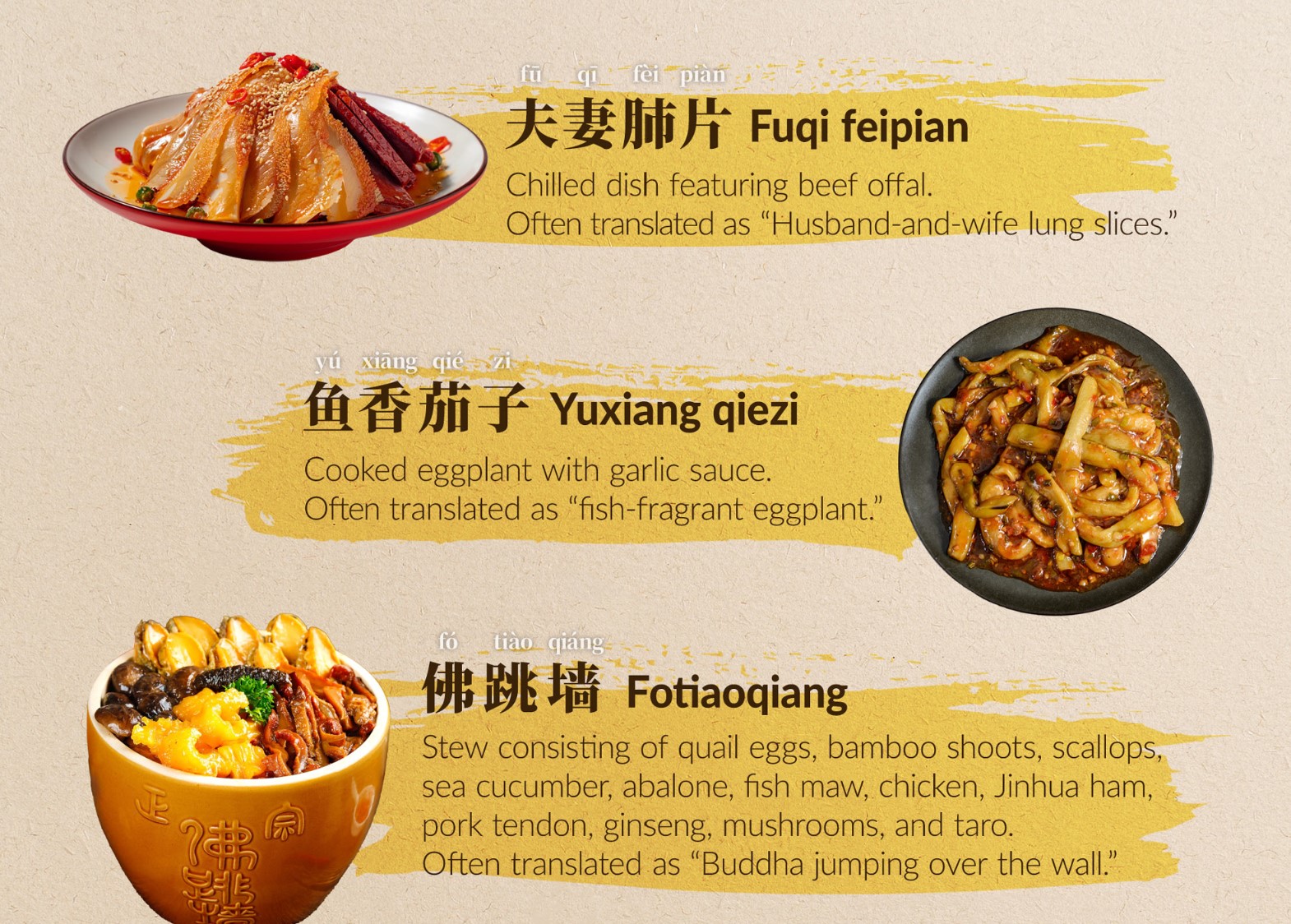Jul 20, 2025, 17:57

The translation of culturally specific Chinese terms has long been a challenge for even the best of experts, with culinary terms ranking among the most difficult. Not for nothing, a recent 2,000-word CNN article decried the “impossible task” of translating foods like fuqi feipian, a chilled dish of beef offal served in chili oil that literally means “husband-and-wife slices.”
But do these dishes need to be translated at all? While diners around the world have grown accustomed to ordering ramen or bibimbap, most Chinese restaurants continue to render their dishes in English. At an academic conference last year, I met a scholar who was advising the government of Quanzhou, in eastern China’s Fujian province, on how to translate local dish names into English as part of an international tourism push. Although I recommended using transliteration instead, they ultimately chose the more conventional approach of describing the dishes using their ingredients and cooking methods.
It’s an understandable choice. The descriptions help tourists better understand what a dish contains, making them more likely to try it. Many Chinese also worry that transliterations may not seem like a “real” translation — officials in particular sometimes believe that simply rendering Romanized names in pinyin looks unpolished or incomplete. But contrary to popular belief, transliterations may actually help non-Chinese diners better appreciate the cultural uniqueness of Chinese cuisine.
Historically, linguistic borrowing has always been the most common method for transmitting culturally specific terms across languages. This manifests in two primary ways: loanwords and transliteration. If the source and target languages share the same script, borrowing generally involves loanwords — e.g., English borrowing the word “espresso” from Italian. If the scripts differ, it involves transliteration — English gyoza from the Japanese.
Semantic translation, on the other hand, conveys meaning rather than form. Traditionally, it prioritizes fluency and naturalness in the target language, even if that means departing from the original wording — rendering the Chinese shizitou as “meatball,” for example. However, semantic translation can also mean literal translation, even if the result seems foreign or puzzling — such as translating shizitou as “lion’s head.”
The main stay should be Chinese characters, Chinese interpretation, Chinese meaning, Chinese tradition, etc.. Complementary to this is only a standardized form of romanized pronounciated translation to a assist person to speak from his or her mouth, how a Chinese word is to be pronounced in Chinese. Assistance to pronounce a Chinese word in Chinese can also be prepared in the form of Russian Cyrillic alphabets but the meaning has to be understood from the Chinese angle.
The meaning behind a particular dish, cuisine, biscuits, titbits etc. must be explained in Chinese only. Normally they carry Chinese historical traditions or certain characteristics that must not be diminished. For example ZongZhi in Mandarin/Chinese, is normally described as dumplings in English but will the English word explain what it is? No. Just check out the word "dumpling" in English dictionary - nowhere near describing what ZhongZhi is. English must recognise that it can never replace a Chinese word. This means direct translation from a Chinese word to an English word is a totally wrong approach to understanding Chinese, which is also a grave disrespect to the Chinese language.
A romanized translation is MERELY a romanized pronunciation to help with the pronunciation of Chinese in case people who don't know Chinese want to speak out in Chinese. Nothing more. A direct translation of a word in Chinese for a word iN English will also not explain the Chinese meaning as shown above in the "dumpling" example above.
The meaning, the tradition, foreigners must still read the Chinese version or get someone who knows Chinese to explain to them. If a Chinese explanation is there and there are accompanying romanized words they are only used to facilitate the pronunciation, the meaning must still be read from the Chinese angle.
Community login







Add a comment